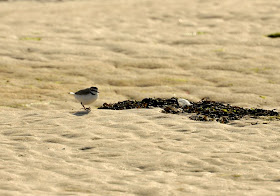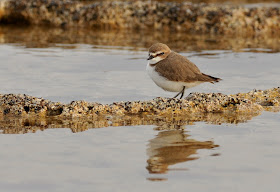
This ringtail Pallid Harrier was stumbled upon at first light in our hire car. It was feeding on a small green snake no more than five or six yards from the car. I'm not sure who was more surprised ! The window was wound down slowly and I managed about twenty shots in a continual burst before it flew. Being so close, the centre spot focus lock had to moved to the right edge to achieve focus on the eye instead of the wing.


















































